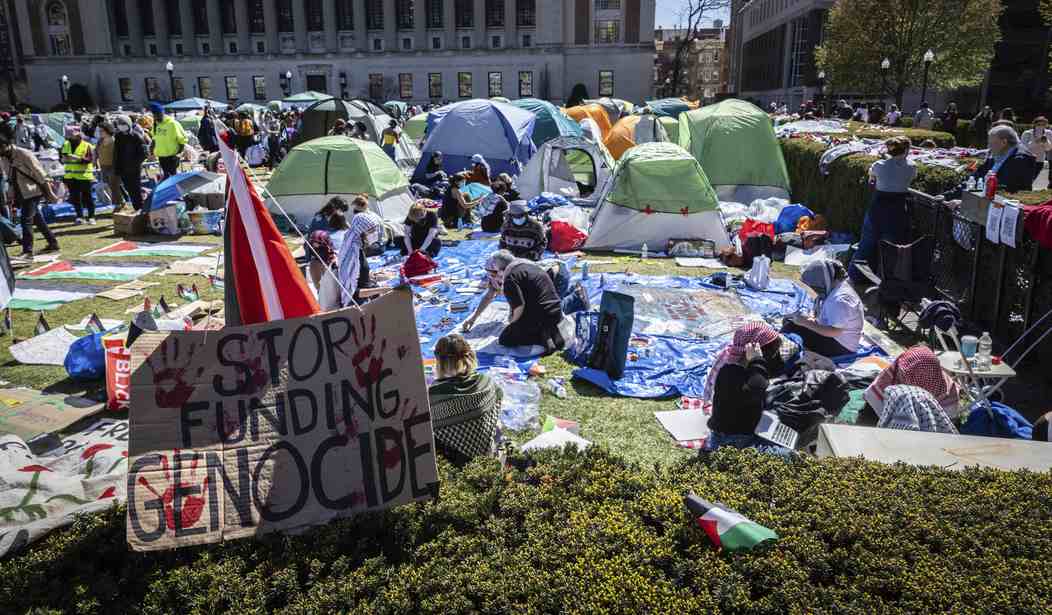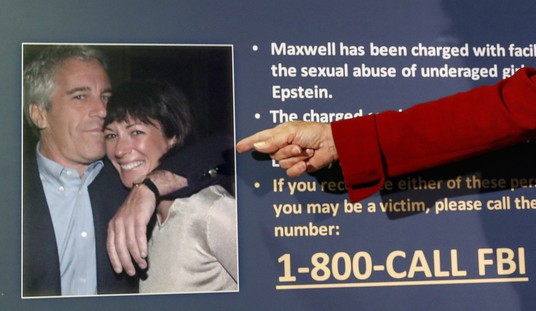Sometimes you hear a political figure describe an idea and think, "No way." I suspect President Trump has provoked that response from a lot of people (and not all of them Democrats) when he's describing his plans for his history-making non-consecutive second term. While on the campaign trail working to Grover Cleveland himself back into office, he made all of his plans very clear, and he's following through at a rate that is making a lot of us dizzy - and keeping Democrats on their back feet, which is a good thing, and that is for sure and for certain.
Then, on Wednesday, during a visit with Israel's Prime Minister Benjamin Netanyahu at the White House, Trump floated something new: America takes over Gaza, then resettle everyone there currently somewhere else where they can have more food, housing, clean clothes, and fewer explosions. Raze everything in Gaza to the ground and start from scratch with the United States in charge. Sounds crazy, on the surface; the people of Gaza would never go for it.
But is it really a crazy idea? A recent column in Tablet from author and columnist Lee Smith presents a different take on what would be the end of a destructive construct: The "nation of Palestine."
Yesterday, President Donald Trump single-handedly collapsed the most destructive idea of the last hundred years—Palestine. During meetings with Israeli Prime Minister Benjamin Netanyahu and other Israeli officials, Trump said he was going to move 1.7 million Palestinians out of Gaza. And just like that, he broke the long spell that had captured generations of world leaders, peace activists, and Middle East terror masters alike, who had paradoxically come to regard the repeated failure and haunting secondary consequences of the idea of joint Arab Muslim and Jewish statehood in the same small piece of land as proof of its necessity.
This, folks, is called "thinking outside the box." The Israel/Palestine argument has been going on for the better part of a century, ever since Israel was founded in 1948 - and the hatreds involved go back for millennia. Can this be done at all? Leaving aside the howls of outrage from the American pro-Hamas left, Mr. Smith looks at the practical aspects, and he makes the case that this may not be as far-fetched an idea as it seems. Of course, success is contingent on President Trump exercising some robust American persuasion by swinging the beg American economic stick. Well, he's certainly not been shy about doing that in Central and South America.
Trump said, enough, we’re not rebuilding Gaza. Time for a new idea—the Gazans have to to go, they can try to start again somewhere else, in a land where every building still standing isn’t already wired to explode.
What if they won’t go, or if the Egyptians and Jordanians won’t take them? They’ll take them, said Trump.
And, well, they might, given the next statement:
Egyptian President Abdel Fattah al-Sisi’s problem is that he allowed Hamas to smuggle arms through the Philadelphi crossing into Gaza, thereby violating Egypt’s peace treaty with Israel—which is what we nominally pay him for. From the perspective of Trump, an American president keen to enforce treaty obligations, Sisi has a new chance to prove himself as a friend of America and not a grafting liar by adding a million Gazans—who in the past have been ruled by Egypt and have family names like al-Masri (“the Egyptian”)—to Egypt’s existing population of 112 million, amounting percentagewise to roughly the same number of legal immigrants that the United States accepts per year.
This isn't something that requires American arms. The needful thing here is for President Trump to quietly contact Egypt and tell them, "Say, nice economy you have there. It would be a shame if anything... happened to it." Like, say, the loss of a big heap of American currency, the fee, in effect, for keeping the Suez Canal open.
But here's the real nub of the argument: This cycle will just continue if things are left as they are. Hamas - and I remind you, the people of Gaza elected Hamas - are not interested in peace. They are interested in killing Jews, as they demonstrated so horribly on Oct 7th, 2023. This cycle will continue, it will be repeated over and over until something dramatic happens, like the people of Gaza being removed to someplace like Egypt or Jordan and eventually absorbed. Either that or at some point in the future, some frustrated Israeli leader, after another Oct. 7th - style attack, will point the Israel Defense Forces at Gaza and say, "Caedite eos. Novit enim Dominus qui sunt eius. (Kill them all - God will know his own.") As Smith writes:
Regardless, should the Palestinians remain in Gaza, they would invariably return to war no matter how much munificence the Gulf Arab states, the European Union, and perhaps even the U.S. might shower on the toxic sand castle built over the past two decades with billions of Western aid money. Proof the Palestinians can’t and won’t keep the peace is that even after they won a reprieve when Trump’s Middle East envoy Steve Witkoff forced the Biden administration’s cease-fire on Jerusalem, Hamas and its NGO-supported human shields celebrated in the streets as if the Hamas space program had successfully landed Palestinians on Mars. Even as Israel released jailed murderers, the Gazans paraded Israeli hostages through the ruins of Gaza like trophies of war.
The current situation is unsustainable. And that is probably a gross understatement.
See Related: 'Riviera of the Middle East': Trump, Netanyahu Unveil Bold Plan for Gaza, Peace
WATCH: Like Clockwork, NBC Simp Hyperbolizes That Trump Takeover of GAZA Would Be 'Ethnic Cleansing'
Yes, this is a plan that would result in the end of the "nation of Palestine," originally conceived by Romans looking to annoy rebellious Jews in the land then known as, yes, Judea. And maybe it merits more consideration than we might think at first glance. It would take years to restore Gaza to a livable place.
Rebuilding, after all, would be the job of decades. Gaza is a war-torn rubble, with dud rounds and IEDs littering the streets. Cleaning it up and removing all of the explosives and various booby traps that are doubtless in place - and which would be added to before Hamas left - is the job of a huge team of carefully trained explosives experts and civil engineers. Only then can the rebuilding commence. But what form would that rebuilding take? Well, look at Dubai. And as for the people, we are looking at a population brainwashed by decades of propaganda to hate Jews. Egypt isn't all that much warmer and fuzzier towards Jews - but the threat of American economic sanctions might prompt Egypt to keep a lid on things.
Here's where I get lost on the idea: I don't think the United States government should directly control Gaza. Not during the cleanup, not during the rebuilding, not at all. If nothing else, hand it over to Israel. Employ American economic might in the form of sanctions to encourage agreement? Sure. Employ American companies in the rebuilding phase? Sure, if we can get enough money out of Israel and the wealthy oil-rich Gulf states - they should have the first crack at it, and this isn't something the American taxpayers should be getting soaked for. Deploy American troops? No.
The Middle East has been a festering sore for too long. It's time for some new ideas - some thinking outside the box. Maybe President Trump's idea is worth a second look - and maybe a third. Granted, he's likely engaging in some "Art of the Deal" here, pitching a big idea and being willing to accept something smaller. But one thing is clear: Things can't remain as they are. Israel shouldn't be subjected to another October 7th - and honestly, the Gazans can do a lot better than their current situation. And, as I've been writing and saying for years, Israel will know no peace until Hamas and Hezbollah are, to put it mildly, no longer a factor.













